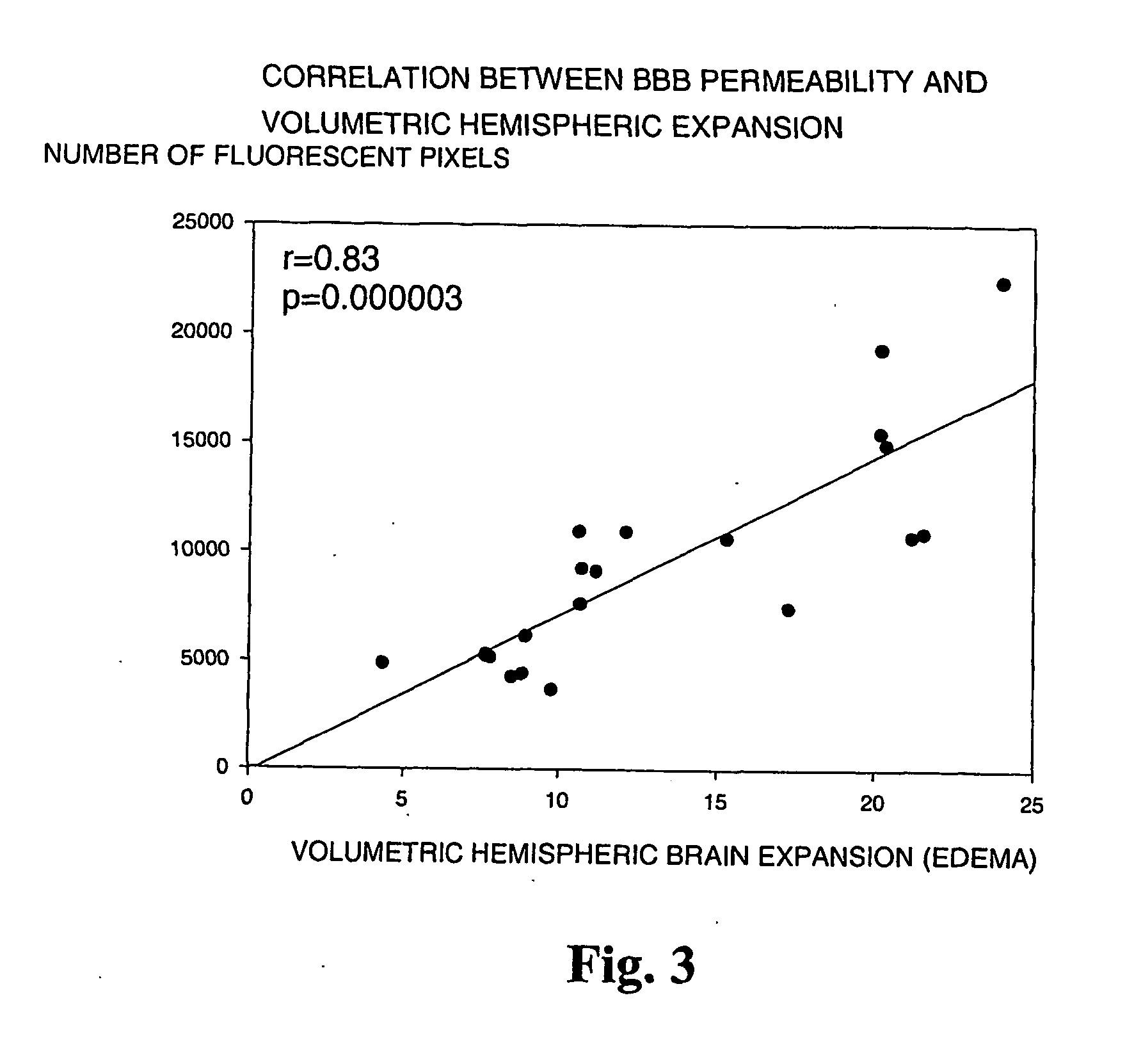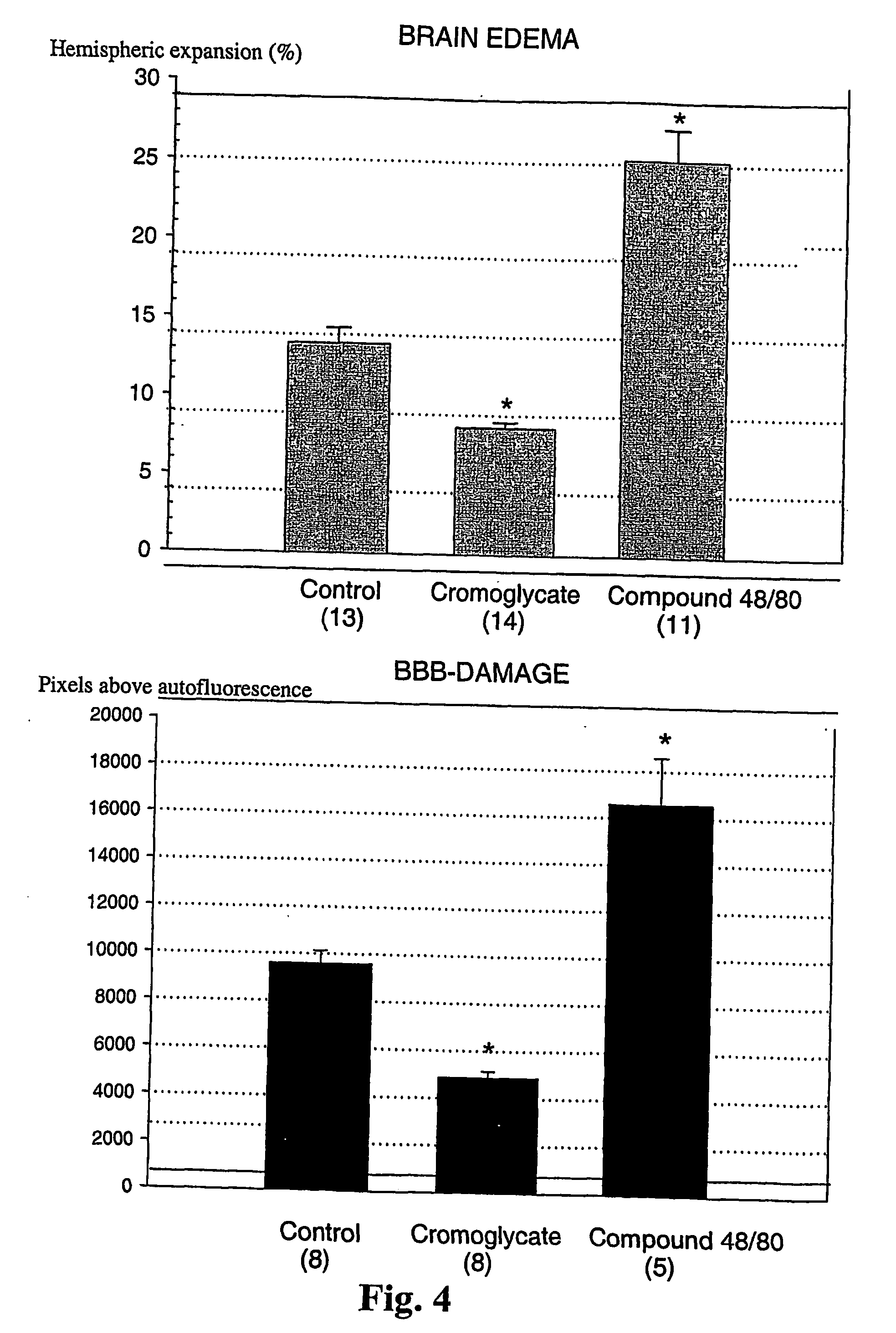Use of a mast cell activation or degranulation blocking agent in the manufacture of a medicament for the treatment of cerebral ischemia
- Summary
- Abstract
- Description
- Claims
- Application Information
AI Technical Summary
Benefits of technology
Problems solved by technology
Method used
Image
Examples
example 1
[0076] Methods
[0077] The suture filament model was used to induce focal cerebral ischemia for 60 min in rats. Reperfusion was allowed for 3 h, at which point the rats were killed, cardioperfused and their brains were dissected into coronal sections. Evans Blue-albumin (2%, 0.3 ml / 100 g) a fluorescent dye, was injected i.v. 20 min before termination to monitor BBB (blood brain barrier) permeability. TTC (2,3,5-triphenyltetrazolium chloride, 2%) staining was used to quantitate the infarct volumes. The volumetric expansion of the ischemic hemisphere was quantitated with computerized planimetry. Rats were assigned in three pharmacological treatments: mast cell stabilizer disodium cromoglycate 750 ug in 10 ul i.c.v. (does not easily cross BBB) (n=14) or control (10 ul saline i.c.v.) (n=13) 5 min prior to ischemia, and a mast cell degranulation agent, compound 48 / 80 (n=11) administered (0.025 mg i.v.) 3 min prior to reperfusion. The Evans Blue extravasation was analysed using fluorescenc...
example 2
[0081] In this example it is shown that pharmacological prevention of degranulation by intracerebroventricular (i.c.v.) infusion of disodium cromoglycate, a selective MC stabilator, strongly inhibits early ischemic brain edema and BBB permeability increase, but induces MC degranulation with the classic MC secretagogue, Thus, compound 48 / 80 used in the example, significantly aggravates both of these phenomena. MC-deficient WsRcWs / Ws rats carrying a defective gene for c-kit (ligand for stem cell factor [SCF] required for MC differentiation were subjected to transient focal cerebral ischemia, and it was demonstrated that early ischemic BBB damage and brain edema are influenced by MC degranulation. Finally, the early neutrophil response, a component of early inflammation and reperfusion injury, was shown to be dependent on the presence of MC, and decreased by pharmacological MC stabilation. The mortality and neurological deterioration after hemorrhagic brain injury was shown to be reduc...
PUM
| Property | Measurement | Unit |
|---|---|---|
| Density | aaaaa | aaaaa |
| Dimensionless property | aaaaa | aaaaa |
| Weight | aaaaa | aaaaa |
Abstract
Description
Claims
Application Information
 Login to View More
Login to View More - R&D
- Intellectual Property
- Life Sciences
- Materials
- Tech Scout
- Unparalleled Data Quality
- Higher Quality Content
- 60% Fewer Hallucinations
Browse by: Latest US Patents, China's latest patents, Technical Efficacy Thesaurus, Application Domain, Technology Topic, Popular Technical Reports.
© 2025 PatSnap. All rights reserved.Legal|Privacy policy|Modern Slavery Act Transparency Statement|Sitemap|About US| Contact US: help@patsnap.com



